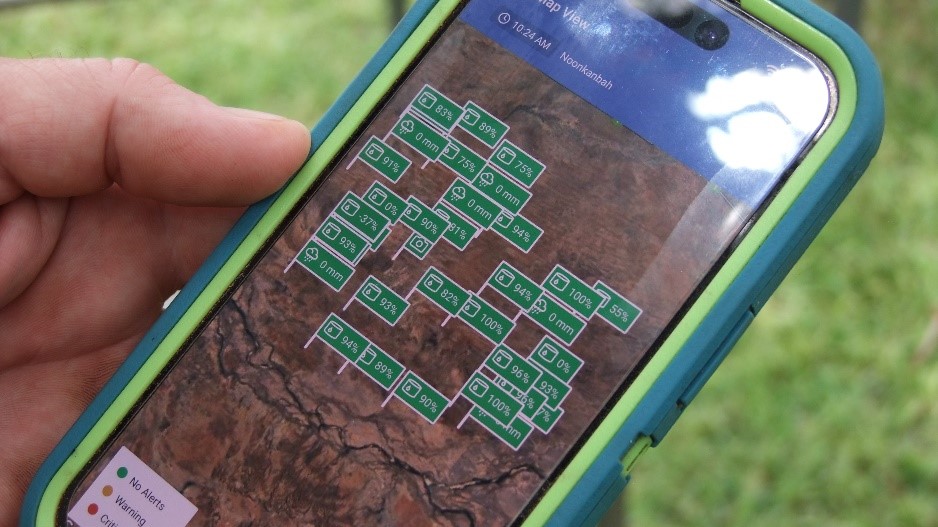Advancing agtech on the frontier: How Debesa and Noonkanbah stations harness innovation for sustainable cattle management

Debesa is a family-run cattle station located approximately 80 kilometres southeast of Derby, in the West Kimberley Region of Western Australia. Kurt Fingers’ parents purchased Debesa 29 years ago, which Kurt now manages along with overseeing Nookanbah station, a larger cattle station east of Debesa.
Both Debesa and Noonkanbah were among the twenty-seven approved recipients of the Producer Innovation Fast Track (PIFT) Grant, administered by the Department of Primary Industry and Regional Development in Western Australia.
Kurt learned about the PIFT grant through the Kimberley Pilbara Cattlemen’s Association (KPCA) and utilized the grant to partially fund the acquisition of ‘ water level monitors with rain gauges and a new cattle crush. These purchases were replicated for Noonkanbah Station. Farmbot water level monitors are solar-powered devices that provide remote level monitoring for tanks, bores, and dams. They send near real-time alerts to a mobile phone via a satellite data link when the level is low, high, or rapidly dropping.
“I use Farmbot’s a lot at Noonkanbah, and I wanted to start using them here for two reasons. You get that reassurance that once you’ve driven away from a water point, you can still monitor it,” Kurt explains. “But the big one that I use here and at Noonkanbah is the rain gauges. Because these have rain gauges attached to them, I can observe the difference in rainfall. Even though it’s only fifty thousand acres, the variance in rainfall between the house and the other end of the property can be significant. If you’re trying to determine whether you need to lighten off on some paddocks in a dry year, like we’re experiencing now, I can monitor that and see which areas received more rain.”
“We have three bots and three rain gauges over here, whereas at Noonkanbah, we must have around 24,” Kurt adds. One of Debesa’s bores operates on a generator, and although Kurt checks the tank 2 or 3 times a week, it usually only needs to be pumped once a week. “With the Farmbot, on some of these hot days, the consumption goes up. I might go there a day earlier; it’s not going to be dry, but I can run the pump for 12 hours and keep that tank full so I have that reassurance after I drive away.”
The Farmbots automatically send alerts to warn of high or low water level conditions. “I don’t pay much attention to the alerts because most of the time, they are only high alerts. I’ll check them once a day, but I’ll probably review the Farmbot data two or three times a day,” Kurt mentions. “It’s not as critical here, but at Noonkanbah, I have 3 or 4 full-time staff members driving around checking waters, and I can view the data in the morning or the night before. If one drops off, I can be on the phone at five in the morning and say, ‘Can you take a new float and whole assembly with you?’ and have them go straight to whichever bore it is, ensuring we don’t lose water.”
“When I’m away on holidays, the main focus is the rain gauges because I can monitor if we’ve had rain. If we’re experiencing issues with the pressure of more cattle coming onto waters, I monitor to see if we need someone to go out there,” Kurt explains. “I can keep an eye on weather apps, and if storms are forecasted, I can check the Farmbots first thing in the morning to see if we’ve had rain, which would prompt the cattle to back off and spread out. It provides peace of mind.”
Regarding future upgrades, Kurt states, “I’ll probably install a few more Farmbots here at Debesa. It’s mainly focused on water points; that’s always been my priority.”